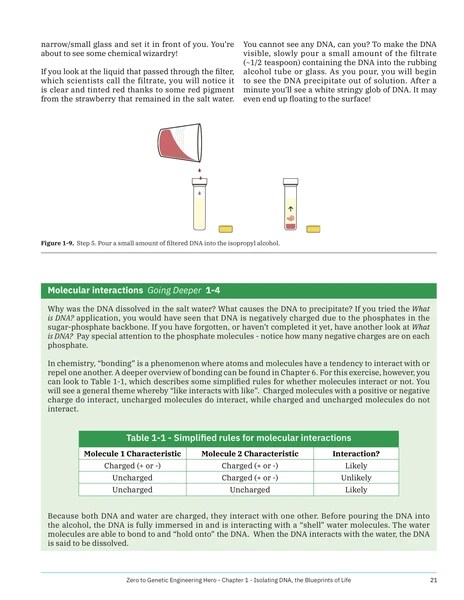
“Zero to Genetic Engineering Hero” is a experimenter’s guide to programming bacteria at home, in class or in a makerspace. Julie Legault and Dr. Justin Pahara of AminoLabs are the Canadian co-authors and they’ve also published an excerpt in the current issue of Make: Volume 79 titled “Isolating DNA”, in which they show you how to extract DNA from a strawberry. It’s an introductory experiment in genetic engineering. Julie and Justin joined me to talk about their book and its goal to bring genetic engineering in a safe way into classrooms and other places.
Subscribe to Make:cast on Itunes or Google Podcasts. You can also find it on Spotify, Deezer, Podcast Addict, PodChaser and Spreaker. A list of previous episodes of Make:cast can be found here.
Dr. Justin Bahara is a Cree scientist-entrepreneur from a Southern Alberta Canadian farm. He has a PhD in biotechnology and bioelectronics from the University of Cambridge. Julie is a designer-entrepreneur from Montreal, with an M.A. from the Royal College of Art in London and an M.S. from the MIT Media Lab.

You can buy “Zero to Genetic Engineering Hero” on Amazon or in Maker Shed.
Book cover
These are also several kits from AminoLabs in Maker Shed.
Zero to Genetic Engineering Hero Home Pack (Chapters 1-4)
Become a Genetic Engineering Hero and learn to extract DNA, grow friendly bacteria, make bio-art, and engineer bacteria by adding DNA from sea creatures!
Zero to Genetic Engineering Hero Home Pack (Chapters 5-7)
Time to get a reaction! Building off of Zero to Genetic Engineering Hero Home Pack (Chapters 1-4), this new set of advanced experiments includes extracting proteins from the cells you have engineered, expressing enzymes to catalyze chemical reactions, and controlling the expression of genes using chemicals and heat.
Canvas Kit – Create Living Paintings
Create living paintings with colourful bacteria! Great for science class, visual arts class, or as a fun and easy science and art exercise at home.
The DNA Playground™ is a new kind of lab equipment that is specially designed for those just learning about biotechnology, molecular biology, and genetic engineering (a.k.a synthetic biology).
See the list of similar products in Maker Shed’s Science and Technology category.

Excerpt:
Julie: That was my thesis, where I was trying to bring biotech, mainly for myself, if we’re being fully honest here. I wanted to redo these types of experiment, where you change the color of bacteria.
You make them glow, you make them smell like bananas. I wanted to do that. And the traditional lab in life sciences, you need to be really well-trained to be able to be comfortable and work fully in a classical lab and having been in a makerspace and 3d printing and laser cutting, and even just the glue gun.
I knew that there was a way to explore this type of situation in a safe way cause that’s really important with biology. But in a safe and friendly way where you’re just at your desk and you can change the color of your bacteria, but you’re not being intimidated.
…
Justin: As we were writing our book, as we were building the ecosystem, a big part of it is iteration and trying to make it work to bring real value. And some of our earliest users of our kits and our ecosystem were those two junior editors, Patricia and Pau. We identified that we’ve got some equipment; we’ve got some kids. Let’s try and wrap it all together in a book and create a story arc and a tiered learning journey. A just-in-time book. I’m learning just like other Make books. And a key part of that was working with real customers/users that we’re focusing on in Pau and Patricia. As we’re wrote the book, they went through the content.
We had sessions where they said, “Hey, this makes sense. This doesn’t.” “Oh, we need more of that.” And the goal was really to make sure Pau and Patricia could understand it and go through it. And I think it’s really important to mention that they were 12 years old when we went through it. So it was really stress testing our ability to make the topic more accessible.
Julie: And to add a little bit more to that, Patricia, she really wanted to do it on her own. She’d already heard about CRISPR. She’d seen “How to Train Your Dragon.” Can I make a dragon, all the things that kids are interested in. And she had to convince her parents that for her to experiment with these kits were safe.
So we also work with the parents and out of the safety and what educators are looking for. And whereas Pau we met his dad first and his dad was really much: “Pau, you need to learn about biotech. It’s one of the next sciences.” So Pau is doing both electronics and sensors and deep sea diving, but also biotech.
So it was interesting to see. Patricia is making her own proteins now. Pau was working with spider silk. So they’ve continued learning, but both from a very different starting point.

ADVERTISEMENT







